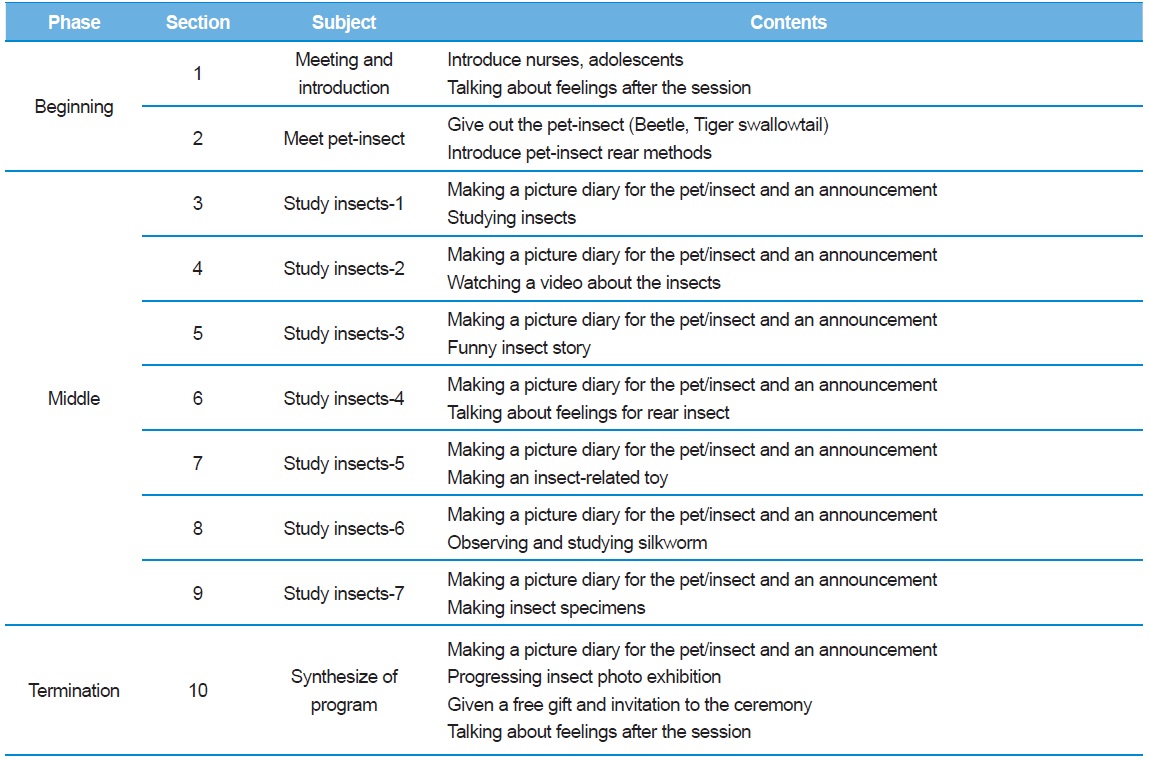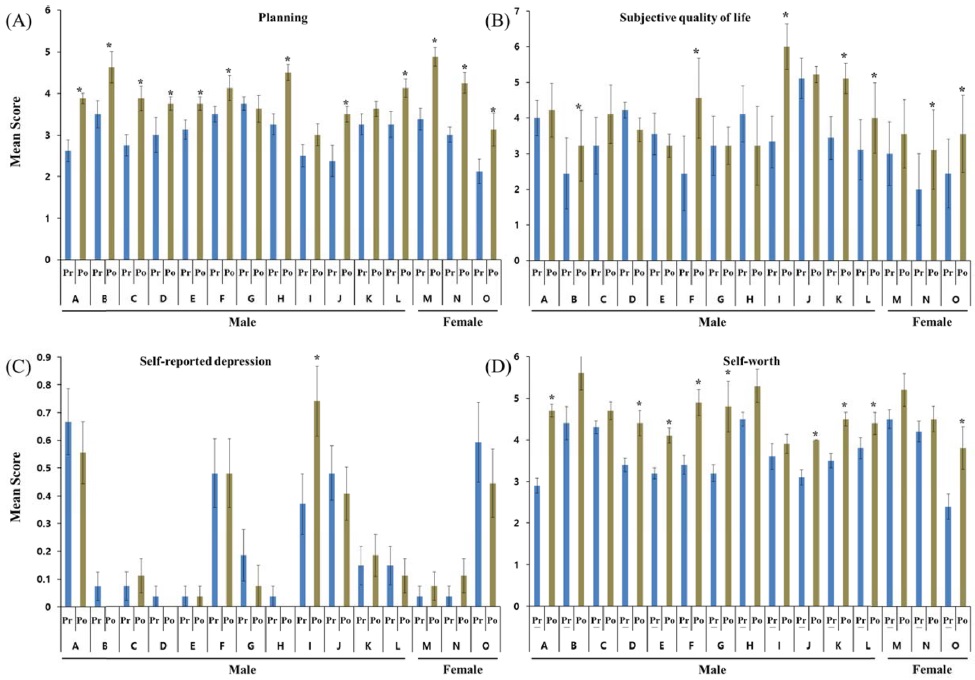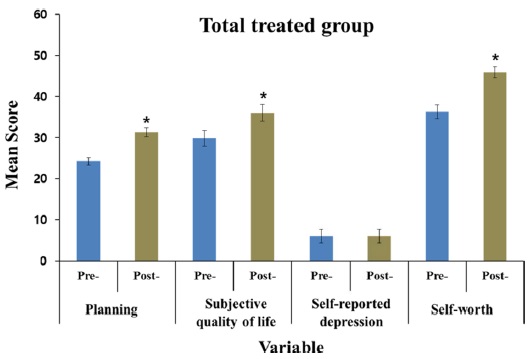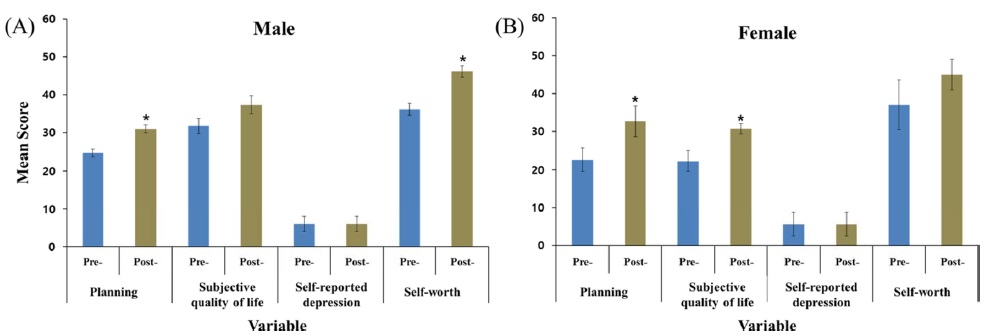



Insects are easily found in nearly every environment. They are among the most diverse groups of animals on Earth. The insect species is estimated at between six and ten million, and there are more species of insects than all other animals put together (Chapman 2009; Novotny
Mental problem has affected 10-20% of children and adolescents in worldwide (Kieling
Worldwide trend towards insects as pet is increasing. The merits of pet-insects are that they are nearby and affordable, do not require much specialized care except for feeding, and they can be kept in relatively little space than other animal. In Korea, several pet-insects are commercialized, but most of them are limited to two types of insects, Dynastinae and Lucanidae. Also, some people prefer a butterflies and crickets as pet-insects.
Previous studies showed that insects are felt mostly positive in people through surveys of peoples’ preferences for insects (Bae
This study utilized a pre-test/post-test design and included an experimental group. The questionnaires included items that measured planning, subjective quality of life, self-reported depression, self-worth. The questions were simple and clear, and the questionnaire’s reliability and stability had been previously demonstrated (Bae
[Table 1.] Insect-mediated mental healthcare program

Insect-mediated mental healthcare program
Collected data were converted for coding and analysis with SPSS statistical software version 12.0 (Statistical Product and Service Solutions, Inc., Chicago, IL, USA) for Windows. Some coding data were also re-coded on an ordinal scale. Frequency, significant difference, and correlation analyses were performed on the coded data using SPSS statistical software version 12.0. Means and standard error (SE) were used to summarize continuous outcome variables. Paired t-tests were used to examine differences in pre-test and posttest scores. Statistical significance was set at the conventional α< 0.05 level.
>
Individual analysis for the psychological scale
The effects of a total of 15 participants completed the insectmediated healthcare program were analyzed separately for the individual and psychological scale. Significant differences and correlations were found according to the individual participants’ planning, subjective quality of life, self-reported depression and self-worth, respectively (Fig. 1). The results showed that the insect-mediated healthcare program increased 12 participants in planning, 7 participants in subjective quality of life, and 9 participants in self-worth, respectively. In particular, the individual’ mean scores for planning in most adolescents increased approximately 87% (Fig. 1A). However, self-reported depression of adolescent was not influenced by the insectmediated healthcare program (Fig. 1C).
>
Effects of the insect-mediated healthcare program
The overall result of this study indicated that adolescent who received an insect-mediated healthcare program once showed improvements in their planning, subjective quality of life, and self-worth (Fig. 2). In particular, the mean scores for planning increased from 24.2 (SD 0.957) at baseline to 31.27 (SD 1.08), and the mean scores for subjective quality of life increased from 29.8 (SD 1.903) at baseline to 36 (SD 2.042), and the mean scores for self-worth increased from 36.27 (SD 1.652) at baseline to 45.87 (SD 1.352) at week 10. According to the analytical results of this study, insect-mediated healthcare program significantly improved the emotional health of adolescents.
Additionally, we analyzed the effects of program according to the gender. The result showed that planning and self-worth increased in male (Fig. 3A), and planning and subjective quality of life increased in female (Fig. 3B). In particular, the mean scores for planning increased from 24.58 (0.996) at baseline to 30.92 (SD 1.018) and the self-worth increased from 36.08 (SD 1.540) at baseline to 46.08 (SD 1.464), respectively, in male. In female, the mean scores for planning increased from 22.33 (SD 2.603) at baseline to 30.67 (SD 1.333).
Adolescence is characterized by physical maturation of the brain and body, giving rise to intense psychological and physical changes. These risen emotional experiences have been argued to be the basis of mental problems. Most Korean adolescents are enormously busy with non-stop curricular studies every day. They are received many study stresses. These are the regions of requirement of an appropriate mental healthcare program for adolescents.
In this study, the treatment of an insect-mediated mental healthcare program to adolescents was associated with improvements in mental health indices. This program was performed including the rearing and observing the dynastid beetle, the silkworm, and tiger swallowtail during the experimental period. The participants showed a keen interest in living insects and often asked the program staff about their ecology. These responses may be related significantly to the improvements in participants’ emotional health.
An insect-mediated healthcare program would be help adolescents establish communications, express thoughts and feelings, and solve their academic stress. Actually, we expected that the hands-on experience of insect rearing and insect related plays may provide specific interactions to participants with the insects. Numerous studies reported that animals and pets influenced the positive emotion for participants in therapy with many mental diseases (Barker
This study suggests that insects have ability to catalyze social interactions and to create a more relaxed environment conducive to treating planning, subjective quality of life, and self-worth, a requirement necessary for the therapeutic process. However, the report related with our study is still scarce and further research is required to optimize the insect-mediated healthcare programs.



